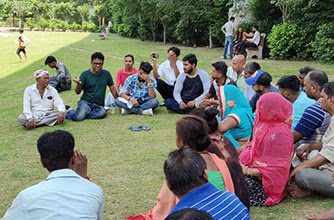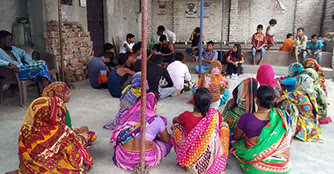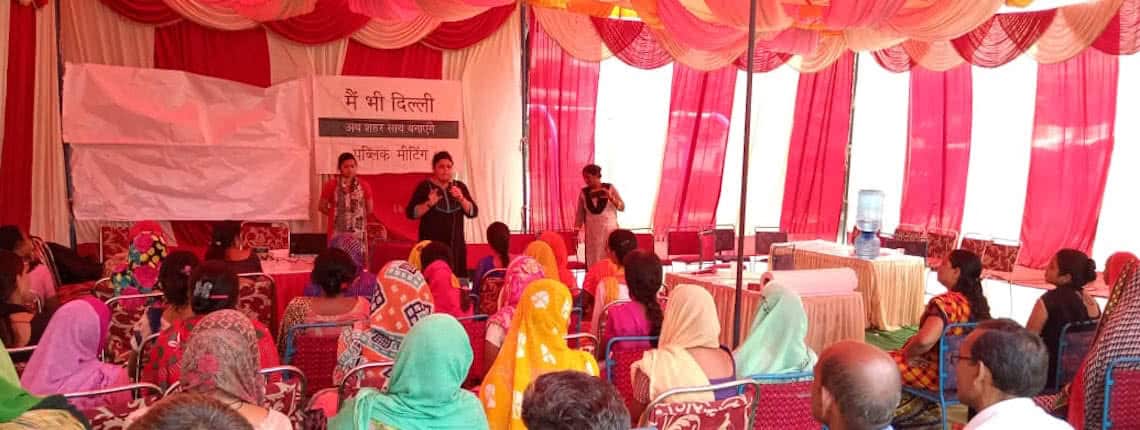Delhi’s 5 million informal workers were the hardest hit when the country went into a harsh lockdown in March 2020 to curb the spread of the COVID-19 pandemic. Now, as cities around the world move toward recovery, so must Delhi. Yet instead of returning to ‘normal’, the city must be reimagined and transformed to become worker-friendly, including for informal workers. The Delhi Master Plan could be a critical tool in building a more inclusive city which prioritizes livelihood revival and the promotion of decent work.
Today, more than ever, Delhi needs a bottom-up planning approach that responds to the way people actually live and work in the city. The city’s large informal economy has been fractured by the onslaught of the economic shock that the pandemic and subsequent lockdown unleashed on them.
There is an urgent need for the Delhi Master Plan 2041, which is currently being drafted, to shift from planning exclusively for the formal city to planning also for the majority of urban workers who work in the informal economy and live in informal settlements. The pandemic has highlighted the perils of exclusion and the critical need to provide an equitable standard of living for all urban citizens.
To address Delhi’s exclusionary history of planning, WIEGO’s Delhi Focal City team—together with a diverse coalition of advocates for informal workers’ rights, housing rights, gender justice and the environment—launched the Main Bhi Dilli, I too am Delhi, campaign in 2018. A citizens’ collective, the campaign aims to intervene in the formal planning process and to influence the creation of a more equitable, just and sustainable city.

In its initial two years, the campaign group held public meetings in various parts of the city to raise awareness about the Delhi Master Plan 2041 and its processes, and collectively built the capacity of people’s organizations to engage with the plan. In many ways, Main Bhi Dilli has served a bridging function by: first, supporting communities to articulate their needs and demands from the city; second, translating those needs and demands to the language of the plan and helping those communities understand that translation—how their experiences and needs intersect with the plan; and, finally, taking this information to urban planners in the form of detailed recommendations.
Many of the core principles which the campaign has been advocating for—including the right to decent housing and its linkages with employment, and access to basic physical and social infrastructure—have been reinforced in the wake of the pandemic. The absence of such rights deepened the vulnerability and insecurity of the workers during the crisis, as was evident in the mass exodus during the lockdown period.
The campaign advocates for a livelihood-centric approach in which informal livelihoods must be formally recognized and adequate support provisions put in place. Formal space allocations to provide for informal workers’ places of work— such as waste sorting centres in neighbourhoods, areas for vending and community work stations for women home-based workers—are some of the key aims of the campaign. To strengthen these demands, the collective has created a knowledge base about the needs of informal workers, in consultation with workers and their member organizations. These were collated in the form of fact sheets and presented to the National Institute of Urban Affairs, the body drafting the upcoming Delhi Master Plan 2041.
The campaign also prepared Technical Notes on key issues, written in the language of the Master Plan so that they could be direct insertions into the Plan. The Delhi Focal City team led the writing of three reports focused on the recognition of homes as a place of work for home-based workers—which is currently penalized; a model of ‘multipurpose community centres’ as a way to actualize decentralizing government services and make them more accessible to citizens by moving the services closer to home; and a decentralised waste infrastructure that provides space for informal waste pickers, like sorting spaces in neighbourhoods, material recovery facilities and recycling markets.

Delhi Focal City also contributed to reports on expanding land available for street vending, to enable the proper implementation of the Street Vendors Act, and on a model of hostels for migrant workers.
While we are waiting for the draft Master Plan to be made public and evaluate the influence of the campaign, several achievements are already evident.
The coalition has been able to bring together not only informal workers but also many different sections of people who are marginalized in the city, such as those who are homeless or disabled, urban farmers, residents of slum clusters and women. It has been a catalyst for learning and exchange, where communities, activists and urban planners have worked together to voice their demands around livelihoods and the city. The campaign has also been able to generate awareness about the planning process among the urban poor, highlighting the need for them to engage in the process.
While public consultation sought during the drafting of the Master Plan was a welcome change from previous planning processes, a lack of public knowledge would have meant that only well-established interest groups would have been able to participate. The Main Bhi Dilli campaign was able to step in to facilitate the participation of marginalized groups who would not otherwise have been heard. This standard of increased participation sets an important precedent for subsequent planning processes.
As Delhi moves toward a new round of consultations, building awareness among workers and their organizations, decoding the ‘technicality’ of the plan to make it accessible to all, and articulating livelihood demands in the spatial language used by the planners is crucial to ensure informal worker groups will engage with the Plan so that their voices might be heard.
Among the many lessons that the COVID-19 crisis has taught us here in Delhi, one critical lesson stands out: any policy that does not recognize and respond to the lived realities of the working poor can bring them to the brink of starvation within days, and the city to its knees within weeks. The critical need to address the link between city planning and livelihoods of the working poor has never been more pronounced.
Top photo: Main Bhi Dilli campaign public meeting on the Delhi Master Plan with residents of Savda Ghevra Resettlement colony organized by Mahila Housing Sewa Trust. Credit: Mahila Housing Sewa Trust
